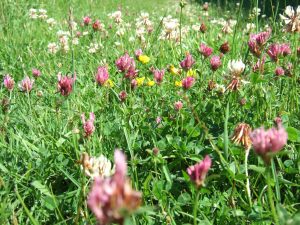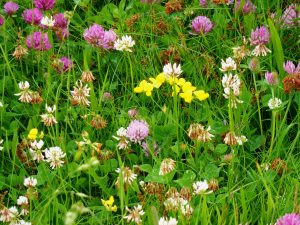Clover has made a name for itself the world over as a terrific forage crop. A native of Northern Asia and Europe, it’s now available to farmers Australia-wide. McKays offers two clover options: red clover and white clover. So which is best for your situation?
There are obvious similarities between the two varieties, but also a few surprising differences (apart from their colour). Let’s have a look at both, and see which variety offers what.
The Similarities
Both varieties of clover are cool season perennial legumes. They both make for terrific fodder choices because of their high yield. High in protein and fibre, they both offer a fantastic feed option for livestock. You can feed more animals from a field of clover than you can from almost any other fodder option available.
Red and white clover require regular moisture to survive. The drought conditions found across much of Australia will often prove too much. Couple this with the fact that both clovers have evolved to handle cooler climates and tend to struggle in extreme heat, and the use of both varieties is limited to Australia’s damper and more temperate regions, or where irrigation is readily available.
The flip side of the cool season coin is that all clovers will cope fairly well with frosts and excess moisture. You’ll rarely find any issues relating to water logging or frost damage with either red or white clover.
Both red and white clover can act as a living mulch. This plant family is famous for its nitrogen production, which can help to re-enliven tired soils. Whether it’s used as mulch between fruit trees, or as a fodder crop as part of good crop rotation, the benefits on your soil can be great. When used as part of a seed mix, it can help spur the growth of the companion grasses.
Finally, both red and white clover can be excellent at promoting biodiversity on your land. The existence of clover will encourage all sorts of beneficial wildlife to visit your property, particularly birds and bees.
The Differences
The main differences between the two varieties take the form of growth habits and their corresponding management.
Red clover grows vertically – new shoots start from the crown and grow upright, until the point at which the plant is ready to flower. The quality of the fodder quickly decreases once red clover has flowered, so it’s important that you cut it back when it reaches about a 20 percent bloom stage, to ensure the feed is still good for your animals.
While this may be more effort, red clover will usually stay palatable to animals for an extra month in the year when compared to white clover. Red clover has a life cycle of 2-3 years, by which time you may want to rotate your crops anyway. Allowing your red clover to flower and seed should give you a decent amount of cover for the next year, if you so choose.
White clover, in comparison, grows relatively short, and spreads using stolons (horizontal above-ground stems). This can create a thick, low growing mat that will continue to spread until it hits a barrier. This type of growth generates both leaves and flowers at the same time, so the forage remains at a good quality all year round, without the need to cut it back.
Due to this spreading, white clover doesn’t have the limited life cycle red clover does. While that’s a good thing for those that want to keep the plant around, it can make rotating to your next crop a little more work. The spreading will also help keep invasive weeds at bay.
Essentially, red and white clover offer the same product with different delivery methods. Depending on what your situation is, you may see the benefit in either a low-maintenance, aggressive white clover, or a slightly higher-maintenance, yet more tranquil red clover.
Whatever the case, if you have any more clover related questions, don’t hesitate to contact the friendly team at McKays.


